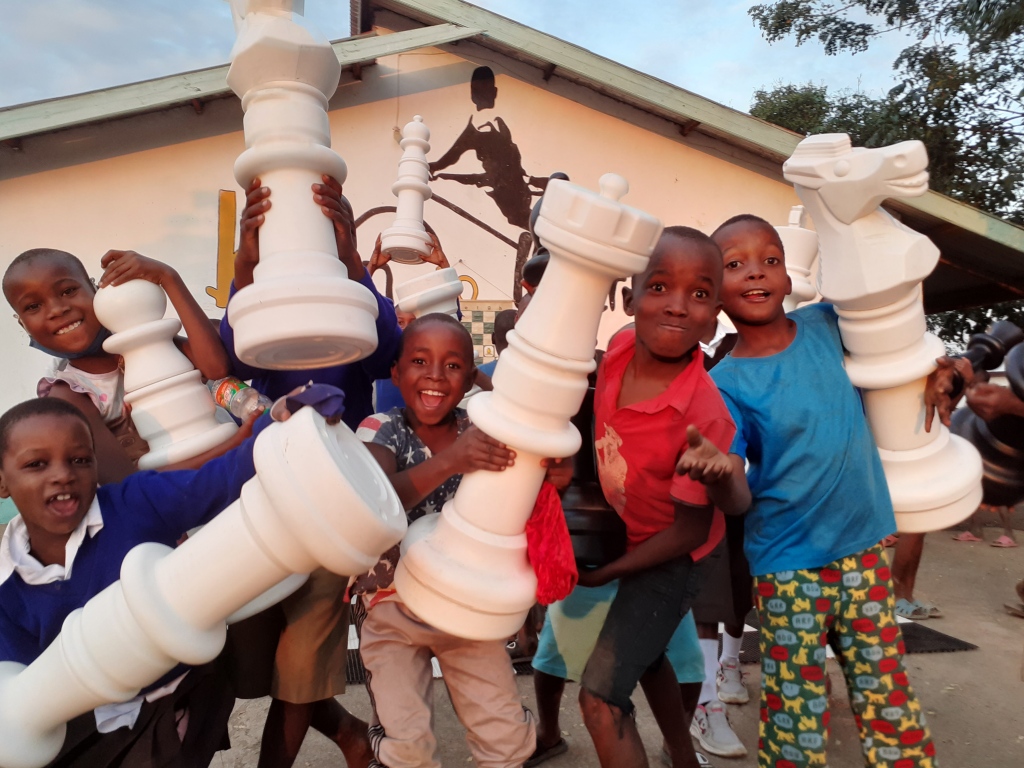En el centro educativo de Born to Learn (BTL) en Moshi, Tanzania, nos sumamos a la celebración del día internacional del ajedrez el 20 de julio. Para ello contamos con un ajedrez gigante donado por Meliá Arusha que agradecemos de corazón.
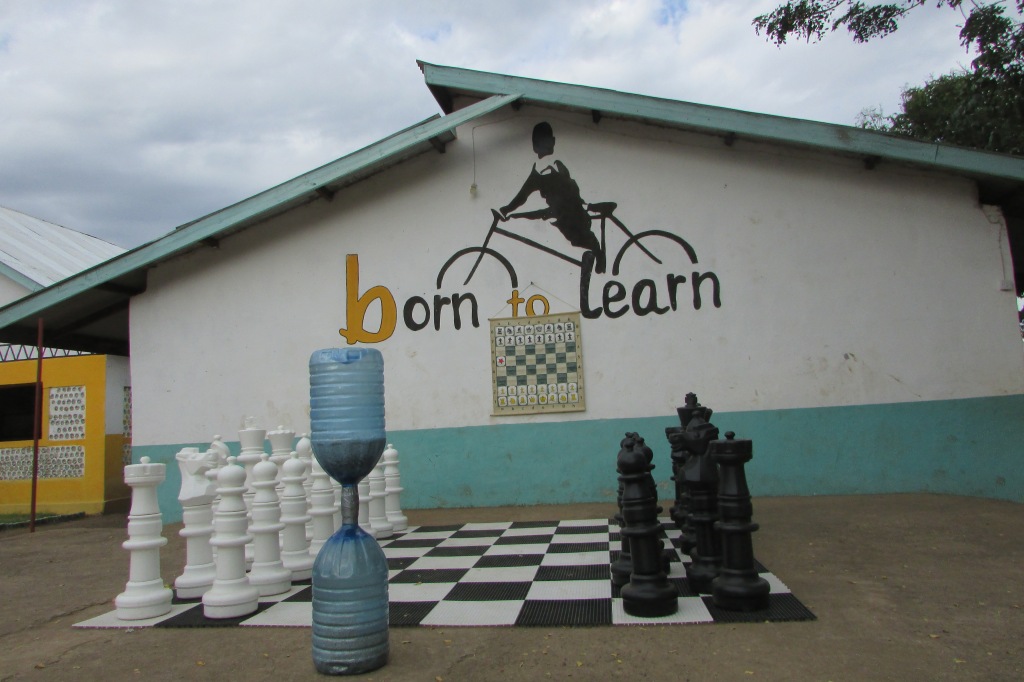
El club de ajedrez de BTL es una ínfima parte de un gran proyecto educativo donde más de 300 niñas y niños de diversas edades y circunstancias reciben semanalmente educación, nutrición en un espacio acogedor.
Con la excusa del día del ajedrez, intentamos promocionar el juego ante los diversos grupos del colegio: guardería, el curso de inglés y los participantes de las actividades extraescolares.
Guardería
En la actualidad BTL cuenta con 4 clases de guardería con más de 100 niños y niñas de entre 3 y 6 años. Se trata de un programa de gran éxito que les ofrece educación y nutrición gratuitas en una edad fundamental para el desarrollo físico y cognitivo de nuestros pequeños.Además de los beneficios educativos y nutritivos, esto reduce la carga de trabajo para sus familias, especialmente las madres.
La enseñanza del ajedrez se puede adaptar a todas las edades. En este caso, es una excelente herramienta para el desarrollo de la memoria, capacidad psicomotriz, socialización y lenguaje, todo ello en un ambiente jovial.
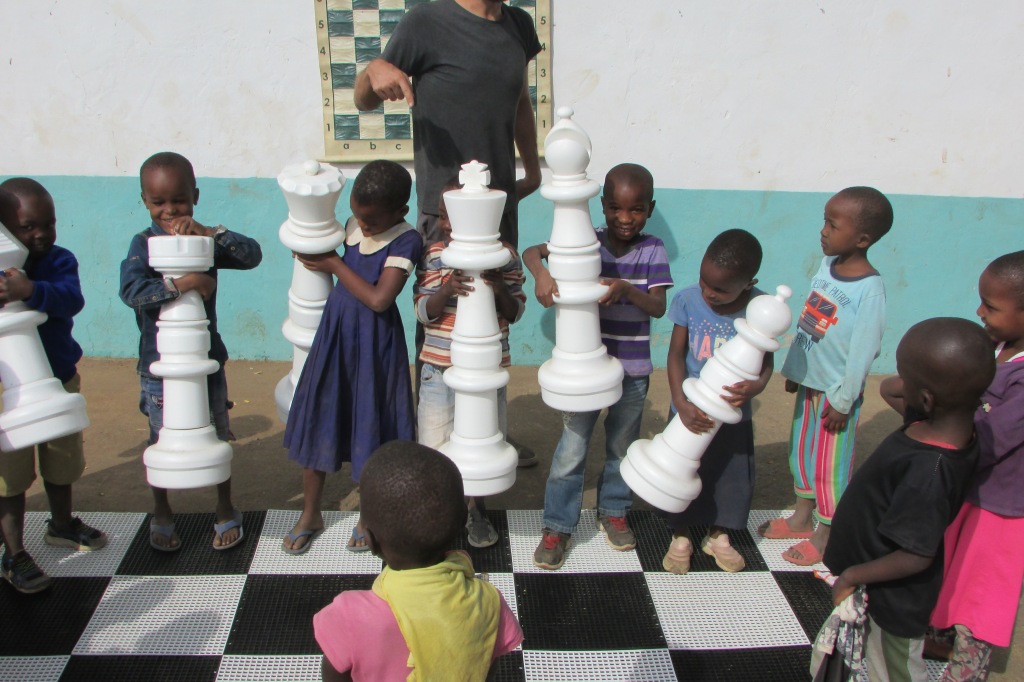
Realizamos una actividad de 40 minutos donde aprendieron los nombres de las piezas y pudieron caminar por el tablero experimentando líneas rectas, diagonales, colores y patrones.
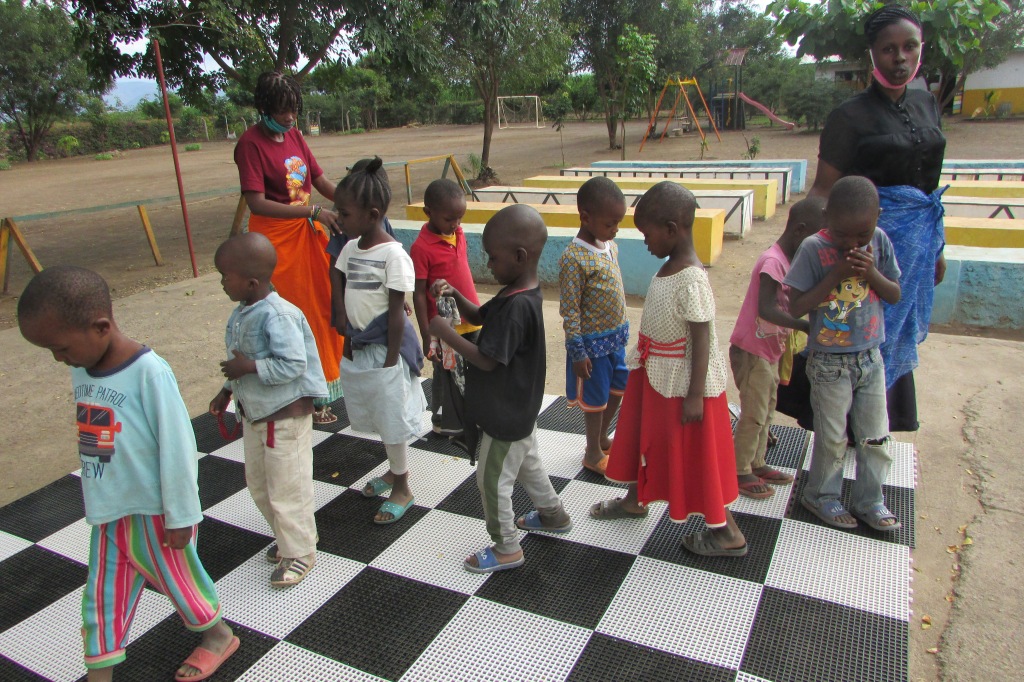
Curso de inglés
Cada mañana un grupo de jóvenes de entre 15 y 18 años fuera del sistema escolar vienen a BTL a mejorar su nivel de inglés en preparación para reincorporarse al sistema educativo.
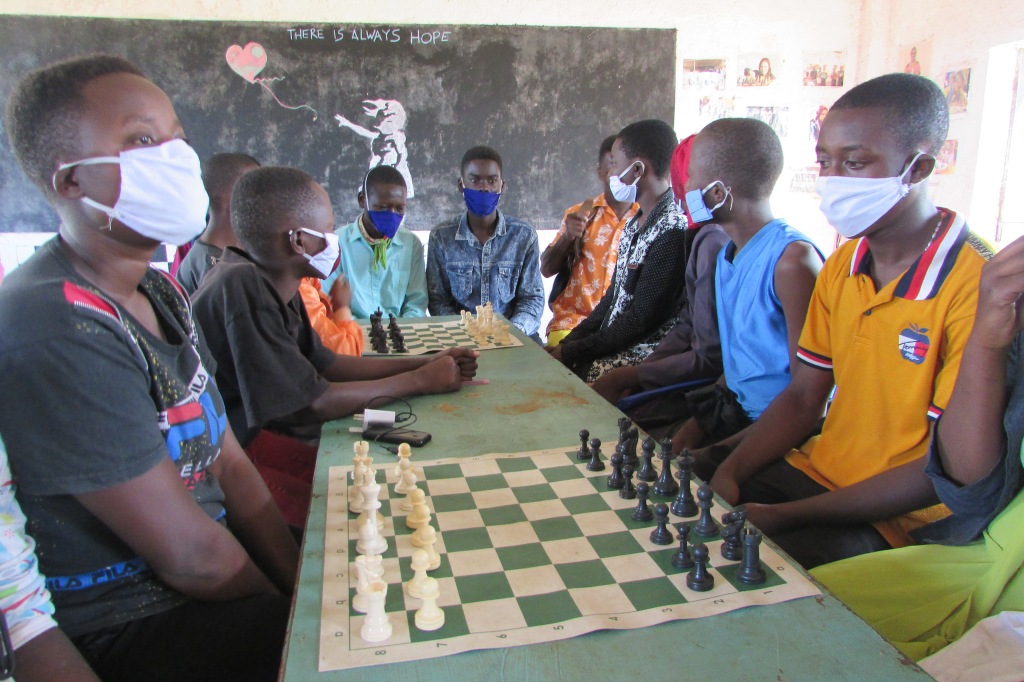
Con este grupo nos centramos en el ajedrez como juego, para entretenernos y relajar la mente después del intenso estudio, el ajedrez ocupa la mente y libera de otras preocupaciones.
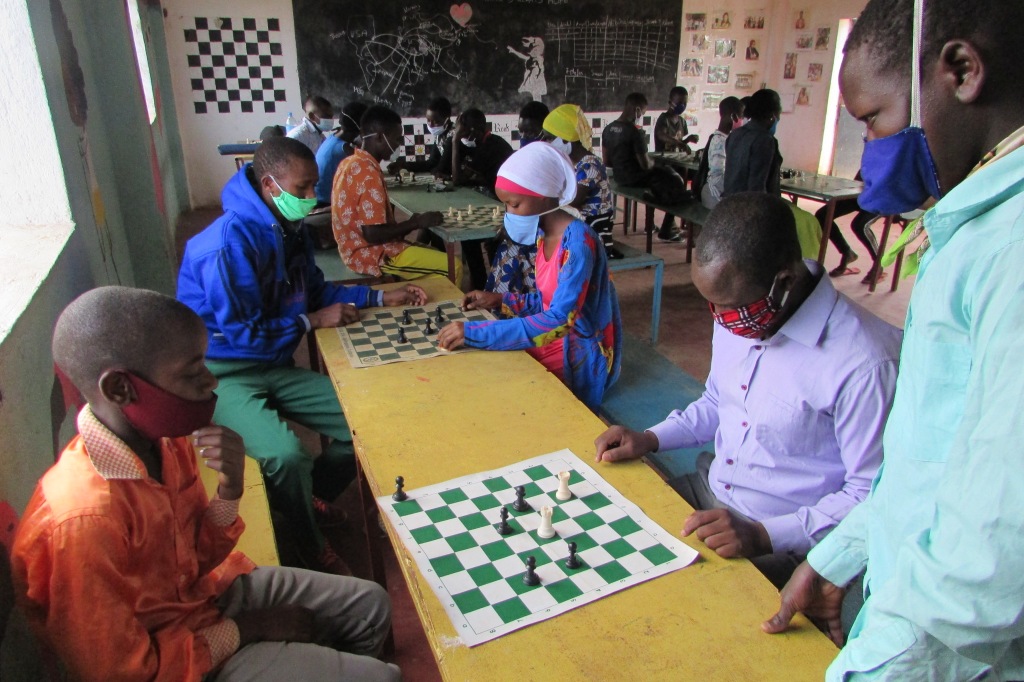
Los jóvenes comienzan a jugar y competir desde el primer día, aquí aprenden a jugar con la torre. Por primera vez, maestros y alumnos se enfrentan en igualdad de condiciones ante un nuevo reto.
Extraescolares
De 4 a 7 de la tarde BTL recibe a más de 150 alumnas y alumnos de primaria que vienen al centro después de sus clases de primaria para aprender música, jugar a baloncesto, revisar mates… y muchas actividades más, para complementar su educación y también para recibir una muy bienvenida cena temprana.
El ajedrez se encuentra entre estas actividades y contamos con más de 50 participantes en el Club de Ajedrez. El lunes realizamos actividades de exhibición y estaban muy ilusionados con el juguete nuevo, despertó también el interés de todos los demás.
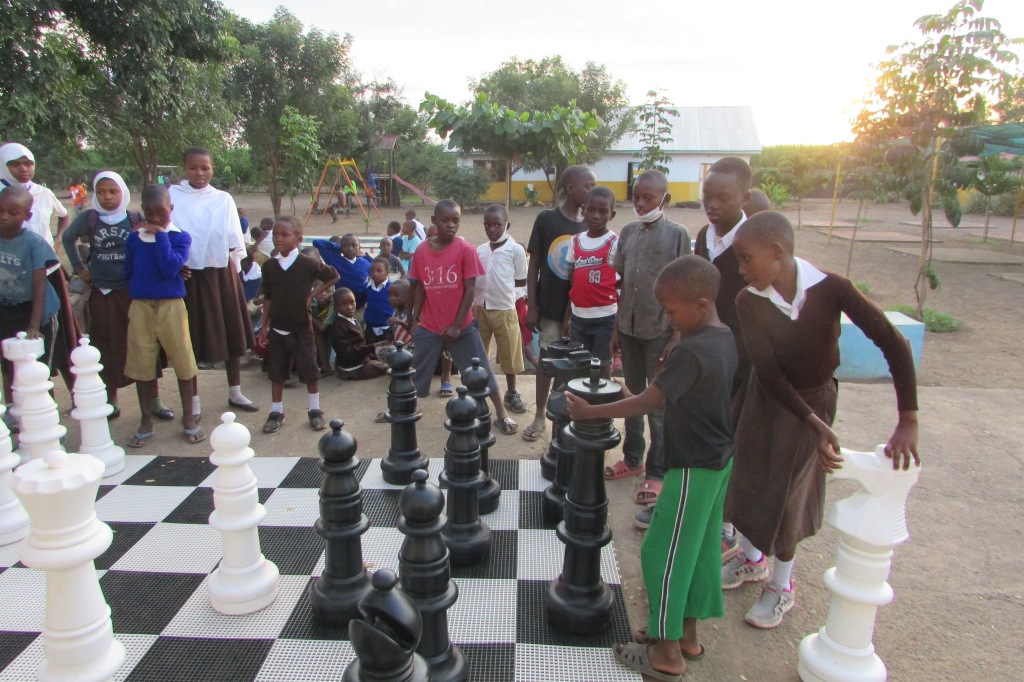
El primer grupo más joven realizó una actividad más sencilla de colocar las piezas en el tablero, el ajedrez es un juego muy versátil que ofrece muchas actividades, con los niños es muy fácil porque siempre muestran su voluntad por jugar.
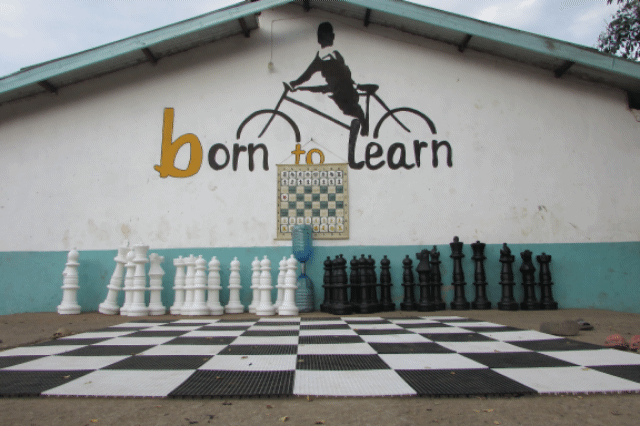
El plato fuerte del día fue la partida por equipos de los mayores, que estuvo que enfrentó a los equipos de Jasinta y Manase, los vigentes campeones de BTL. La emoción y tensión era equiparable a la de cualquier gran evento deportivo y el público se implicó intensamente.
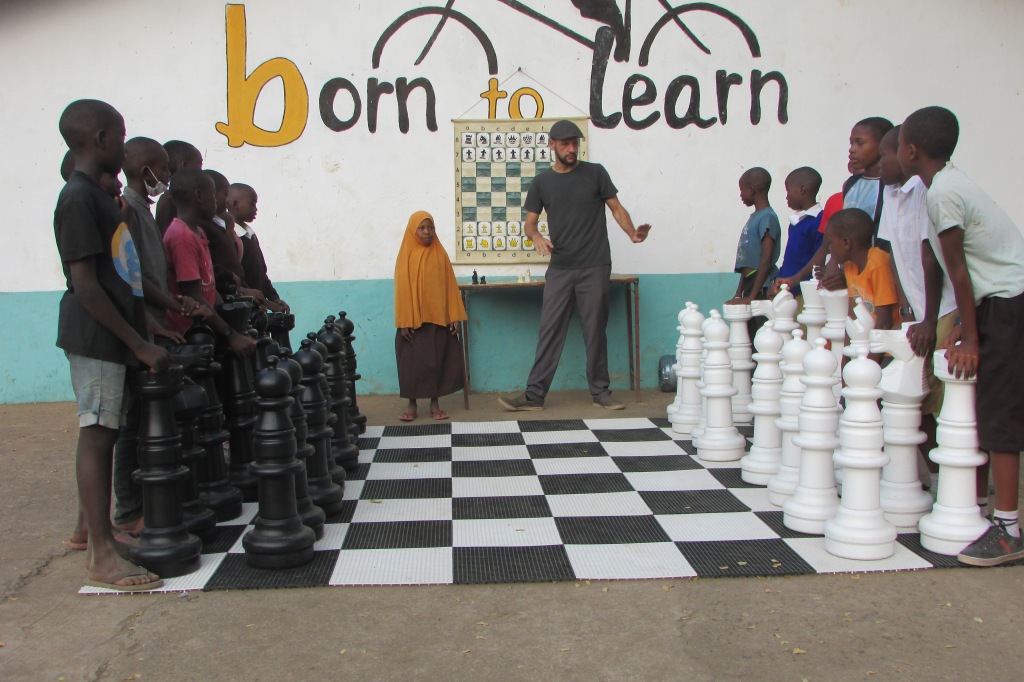
Finalmente, y como es habitual en Tanzania, la actividad finalizó con el jolgorio y la alegría que tanto apreciamos en este país. Aquí la vida siempre se celebra.
